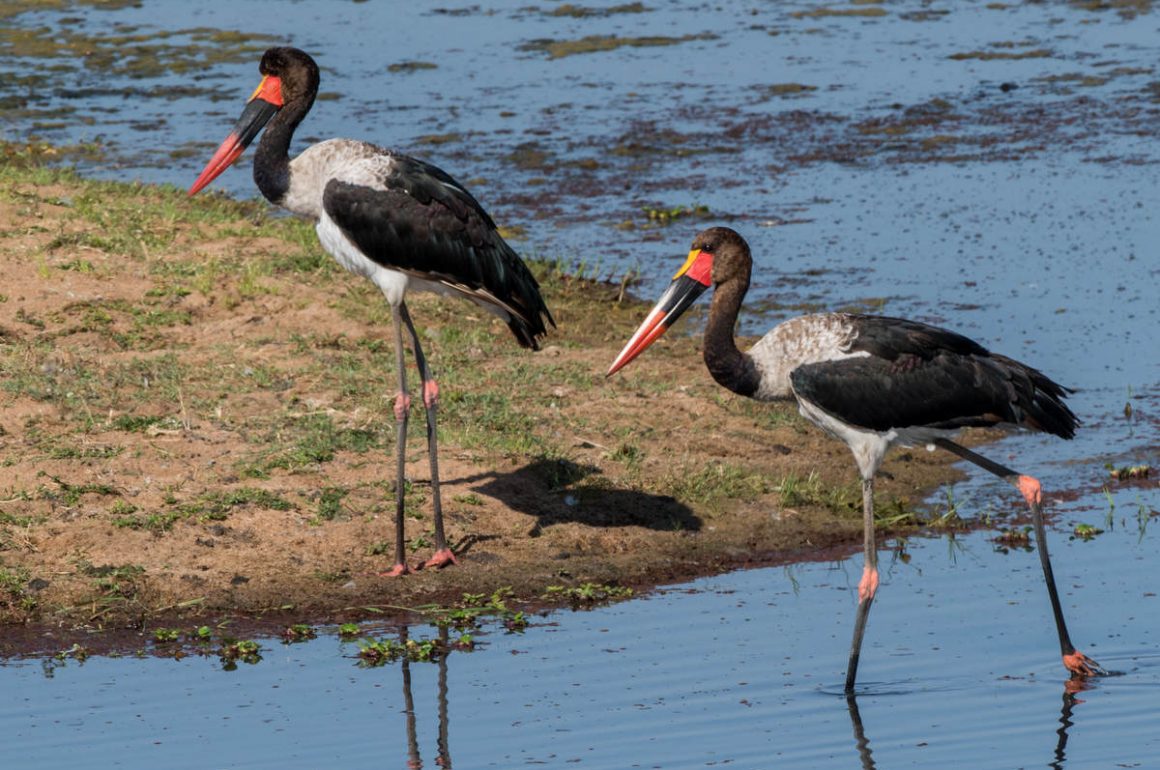
Bateleur is a very small camp in the Kruger Park – a bit remote, but worth visiting. The one bird I did not see here, however, was the Bateleur Eagle …
One highlight in the area is the Saddle-billed Stork, likely to be the tallest species in the stork family.
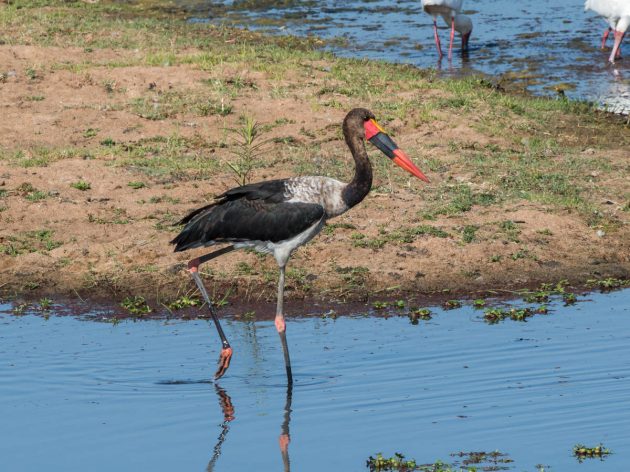
This bird is represented in an ancient Egyptian hieroglyph. In order to avoid violating any copyright, I redrew this from an online source. So, if an ancient Egyptian scribe got drunk, then got to work early the next day and had to record a Saddle-billed Stork, the result from his still-shaky hands would have looked something like this:
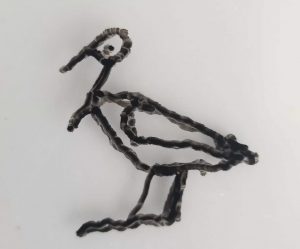
Presumably, then he would have gotten fired.
Anyway, this points to an interesting fact – as recently as about 4,500 years ago, it was found in the Egyptian Nile Delta. However, its range then declined as the climate got increasingly arid, and the symbol appeared less and less frequently. Habitat loss, as documented by hieroglyphs.
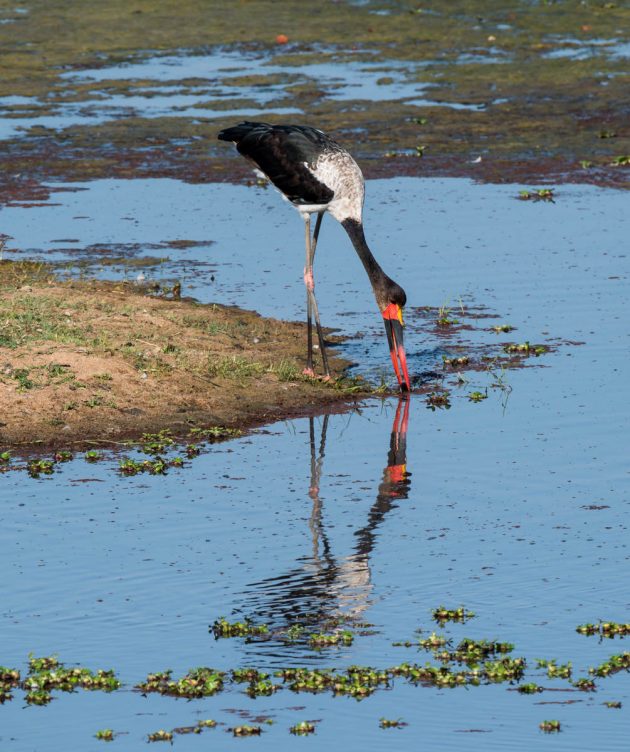
Wikipedia also has an interesting paragraph hinting at observation bias in ornithologists: “At the continental scale, saddle-billed storks preferred protected areas that have a higher extent of open water compared to areas without the storks. Some of these trends may, however, be due to a bias in coverage by ornithologists of safer areas such as national parks and protected swamps that afford easier accessibility and comforts.”
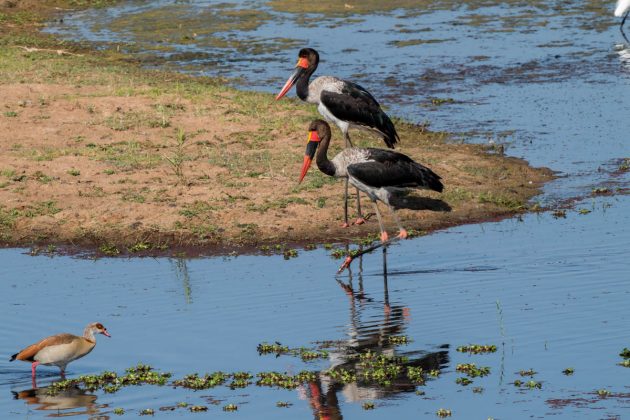
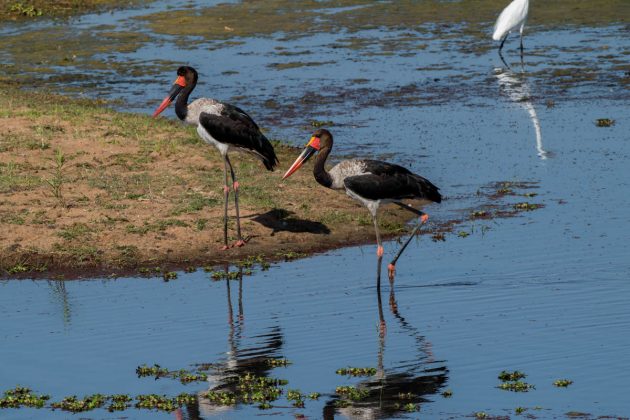
I saw them feeding with several other interesting birds (and I do not mean the Egyptian Goose) – African Spoonbill and Yellow-billed Stork.
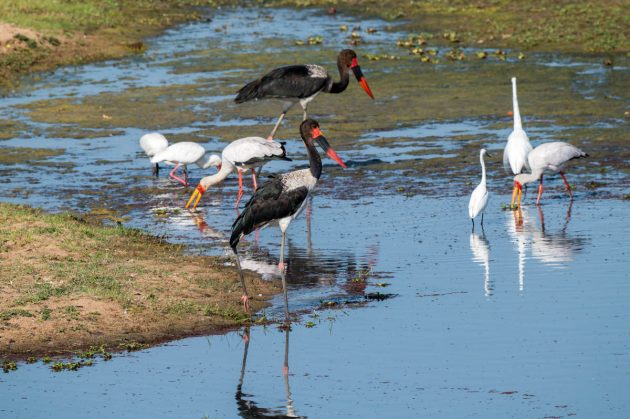
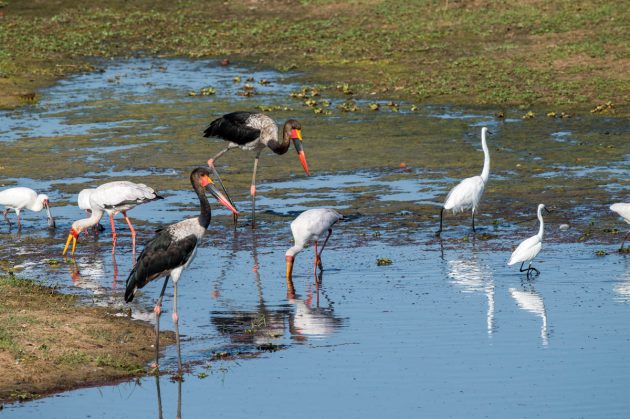
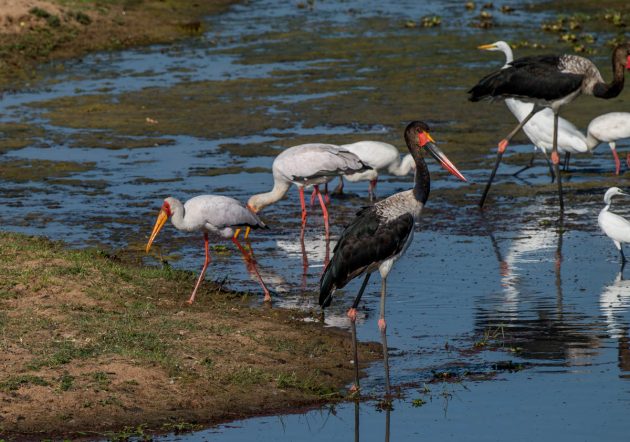
The African Spoonbill is one of the six global spoonbill species, and the main African one (there are also some Eurasian Spoonbills in Africa). Europe has one species (Eurasian Spoonbill), the Americas have one (Roseate Spoonbill), Australia two (Royal and Yellow-billed Spoonbill), and Asia has two as well (Eurasian and Black-faced Spoonbill).
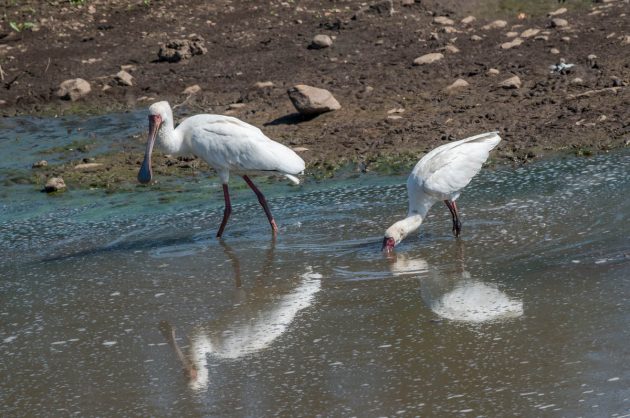
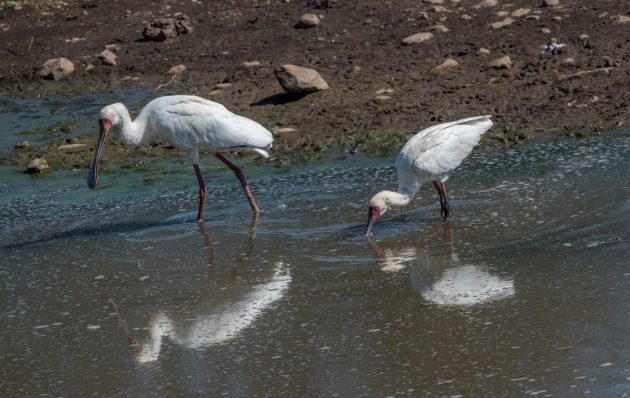
The German name of the Yellow-billed Stork is Nimmersatt, which translates as “Glutton” or “Never full”.
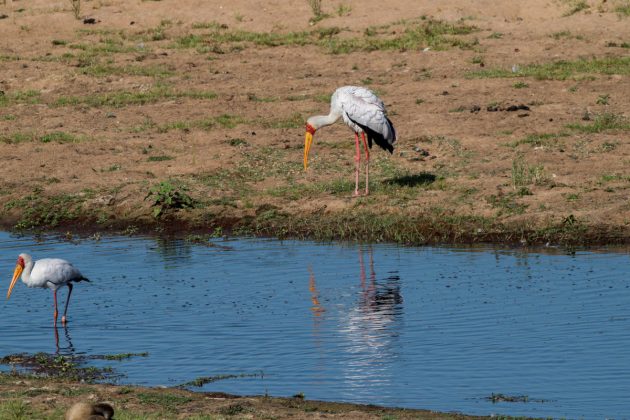
Wikipedia explains the name: “Parents feed their young by regurgitating fish onto the nest floor, whereupon it is picked up and consumed by the nestlings. The young eat voraciously and an individual nestling increases its body weight from 50 grams to 600 grams during the first ten days of its life. Hence, this species has earned the German colloquial common name “Nimmersatt”; meaning “never full”.
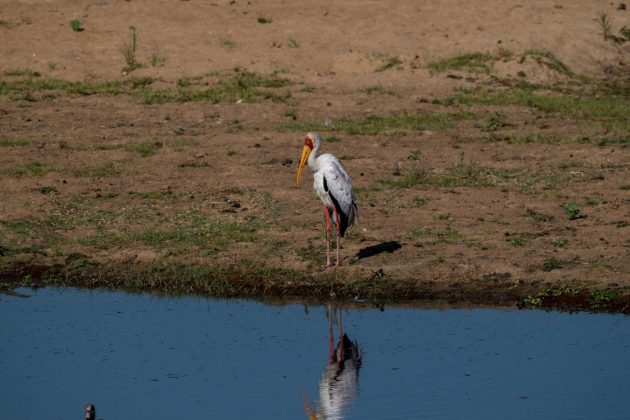
Another member of the stork family, the African Openbill, looks like it is could benefit from a good orthodontist. The bill gap is non-existent in juvenile birds and develops as the bird ages (Wikipedia) – timely intervention could therefore be highly effective.
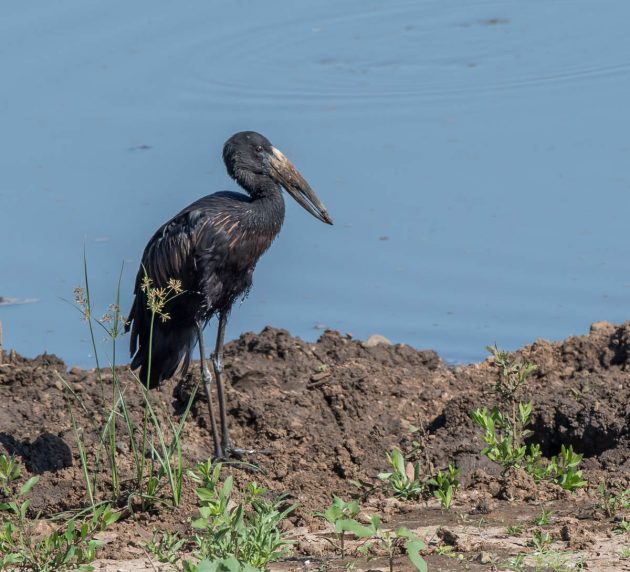
The Latin species name lamigellerus is a Latin phrase for ‘a small, thin, metal plate’ which refers to the flattened feather shafts, especially on the underparts. Can’t say that it is a particularly obvious name from seeing the bird.
Blog readers sharing their house with a noisy teenager may consider replacing him or her with a Brown-headed Parrot, given this statement on a pet website: “Brown-Headed Parrot boasts another very desirable trait – these are very quiet parrots! Thanks to their friendly and calm personality, they don’t have a need to express themselves vocally like some other parrot species. They are great for apartment settings. “
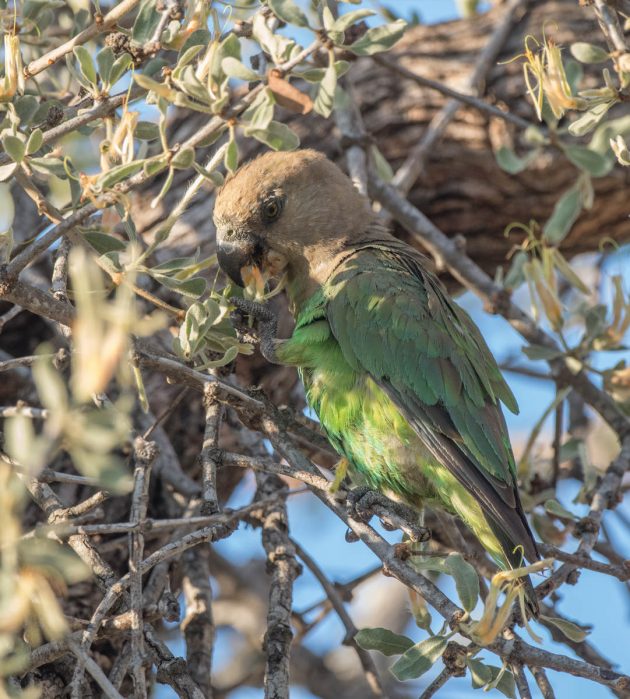
The diet includes seeds, nuts, and nectar. No drugs.
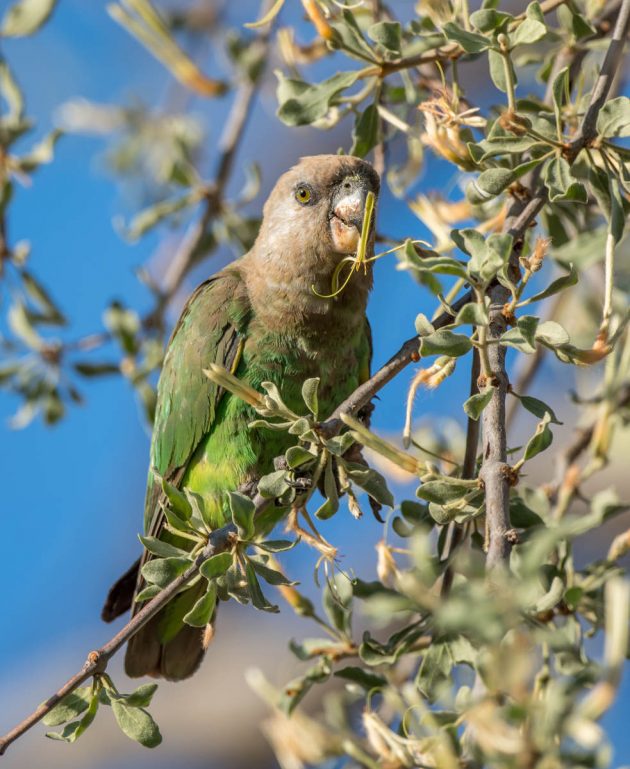
While the species is listed as Least Concern, there are some papers suggesting it may not be as common as assumed, at least in South Africa. This was an unpleasant surprise for a Ph.D. student who initially thought that “all that was required was a comfortable field site where I could study the birds” but then ” “began to suspect that the field guides were maybe being slightly economical with the truth”.
(He did get his thesis eventually, and it is available online).
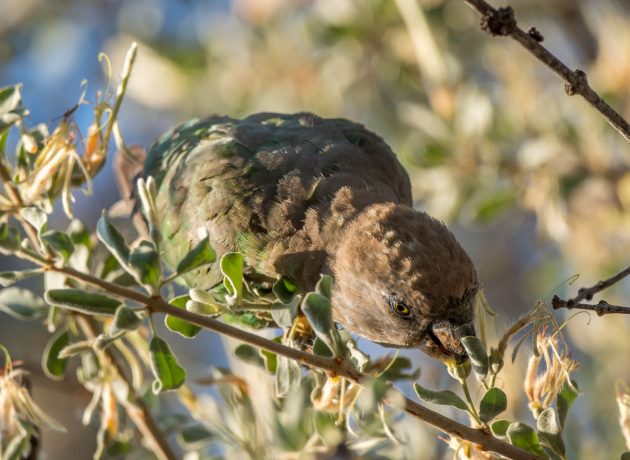
The Latin species name is cryptoxanthus, “hidden yellow”, apparently for its yellow underwing-coverts which are almost never seen (except maybe a little bit on the photo below). Clever to use that for the name then …
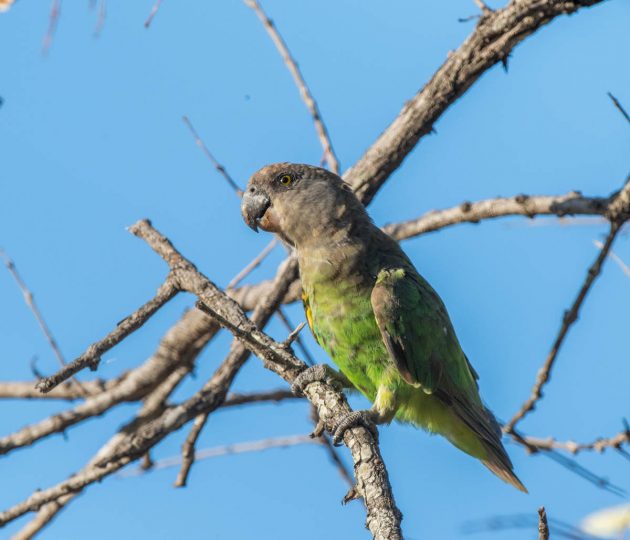
If you want to flatter a Blue Waxbill, you can use call it by its slightly pompous other name, “Blue-breasted Cordon-bleu”.
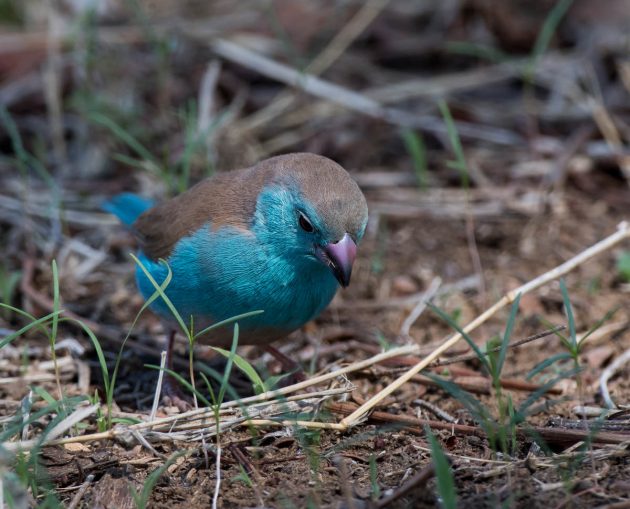
Apparently, the Blue Waxbill often builds its nest close to stinging wasps. The active colonies of wasps are efficient protection against primates and large avian predators. The benefit for the wasps is that they get to keep a beautiful pet.
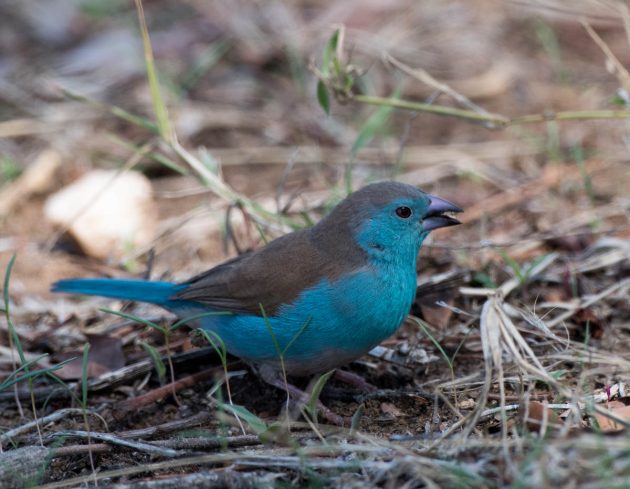
During the whole trip, I only saw the Secretarybird twice, and only on one occasion got (not very good) photos. But this is too interesting a bird not to show.
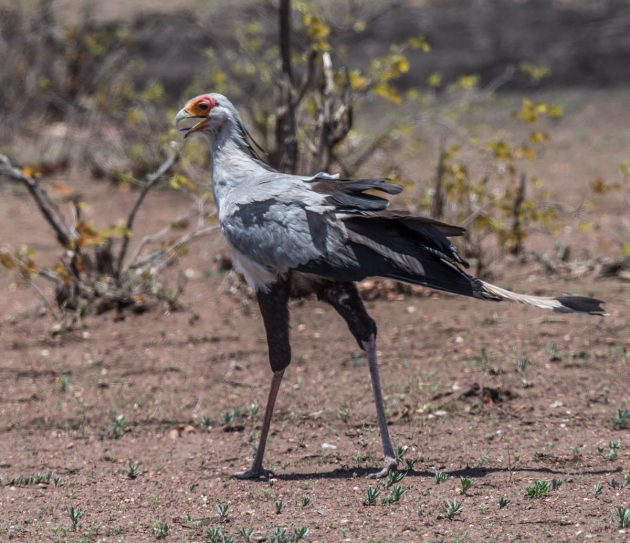
Even the usually rather dour HBW starts the species entry with an excited “The Secretarybird is an iconic member of sub-Saharan savanna habitats”.
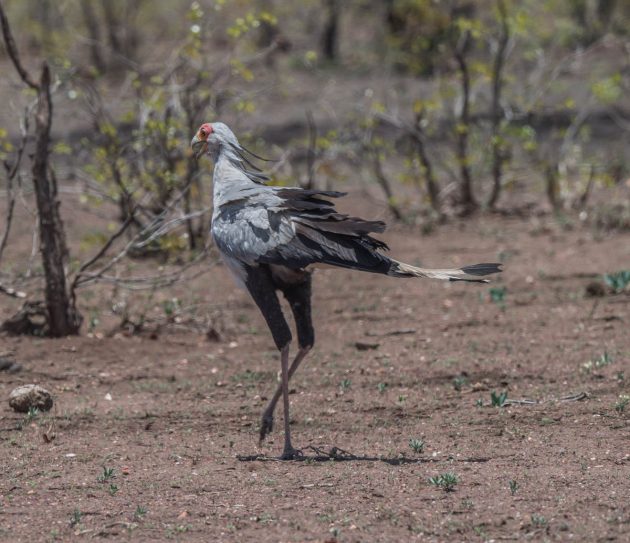
And it is in a family of its own. And sadly, it is listed as Endangered.
The Marabu Stork definitely has a face that only a mother could love. And I do not even want to think about which part of an old man’s anatomy the throat pouch reminds me of. However, that is hard to do when reading that the pouch is used in courtship rituals.
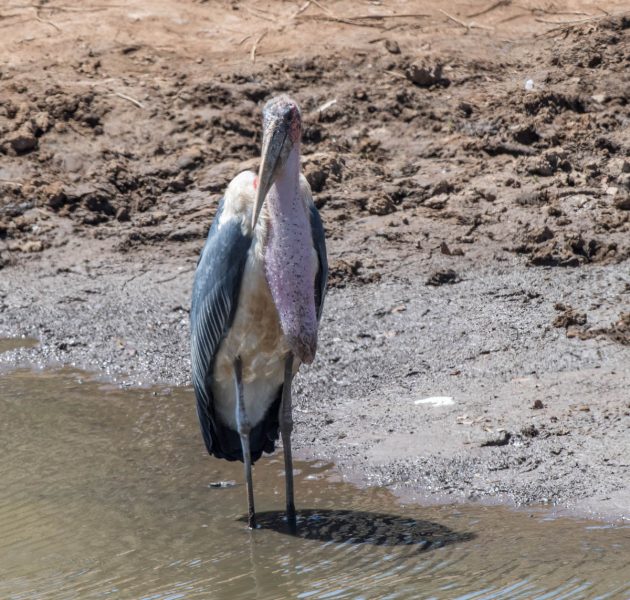
The Natal Spurfowl forages on rhinoceros and elephant dung (HBW) and does so without complaining. Think about it when you feel hard done by life.
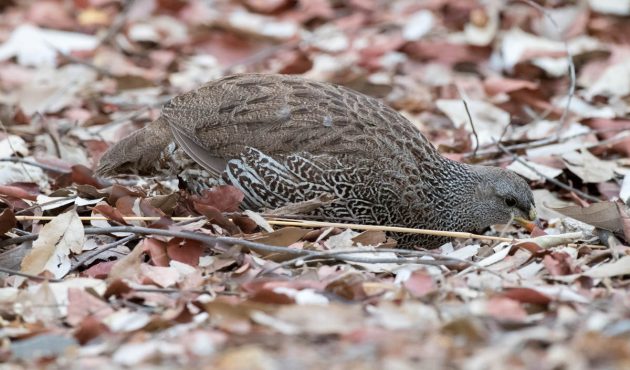
As the world’s largest living bird, the Ostrich is the topic of many weird and wonderful scientific papers.
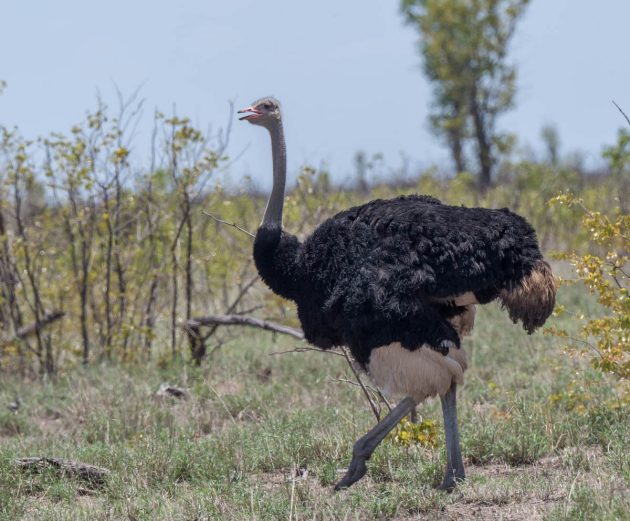
Here are a few examples:
The Ostrich Communal Nesting System
Medicinal and commercial uses of ostrich products in Tanzania
Preliminary Study of Slaughter Value and Meat Characteristics of 18 Months Ostrich Reared in Hungary
Studies on improving ostrich egg hatchability
Ostrich Eggshell as an Alternative Source of Calcium Ions for Biomaterials Synthesis
Ostrich Antibody and Its Application to Skin Diseases, a Review and Case Report
Ostrich Eggshell Beads Reveal 50,000-Year-old Social Network Across Africa
Ostrich farming – A review and feasibility study of opportunities in the EU
Reducing Mortality Rates in Ostrich Chicks
and the very topical
Scientists use ostrich cells to create masks that glow when they detect COVID-19
Also, I learned that in the US, ostrich eggs are priced at $40-$75. Each fresh egg weighs 4 pounds and is the equivalent of 24 chicken eggs.
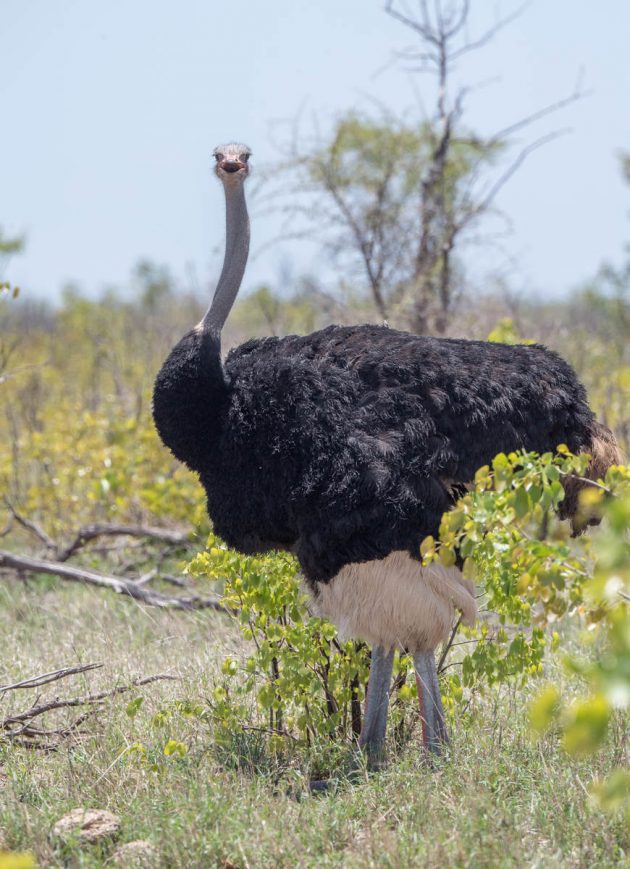
I am showing some photos of the Crested Barbet just to be able to use a quotation from a book by Joe Ide (The Goodbye Coast): “For no apparent reason, he was wearing a hideous Hawaiian shirt. It looked like a family of parrots were trying to kill each other”.
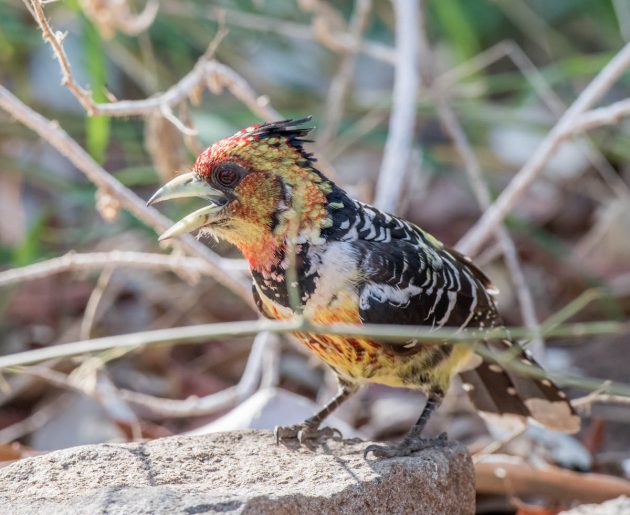
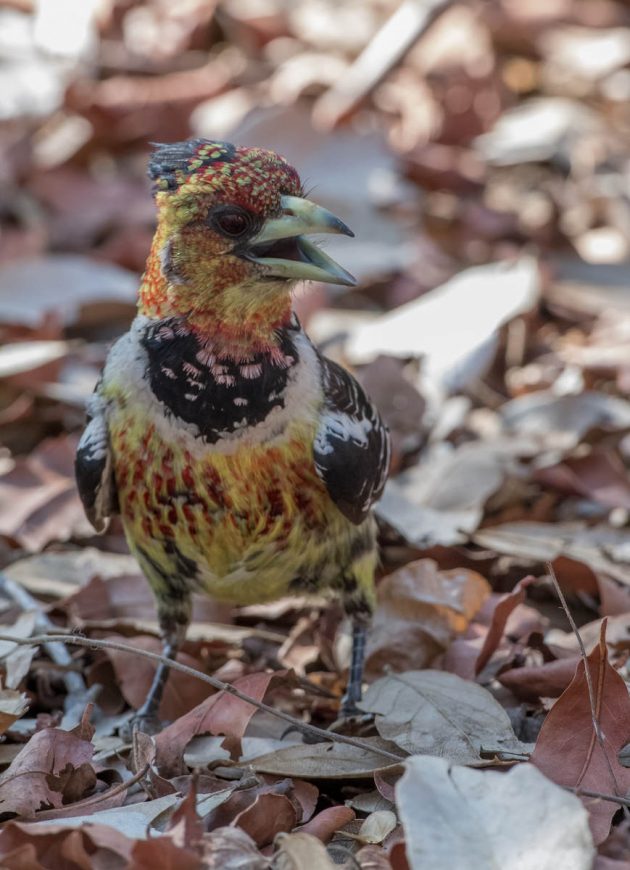
The Black-backed Puffback has what eBird describes as “a fiery red eye”.
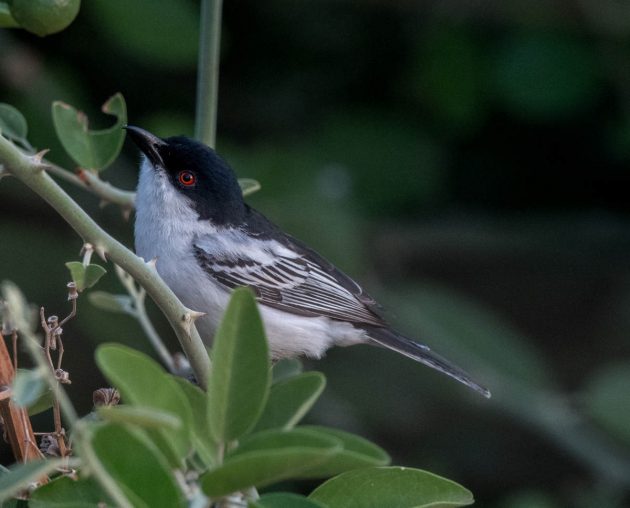
eBird also explains the name: “When excited, males can raise fluffy white feathers on the rump to resemble a puffball.”
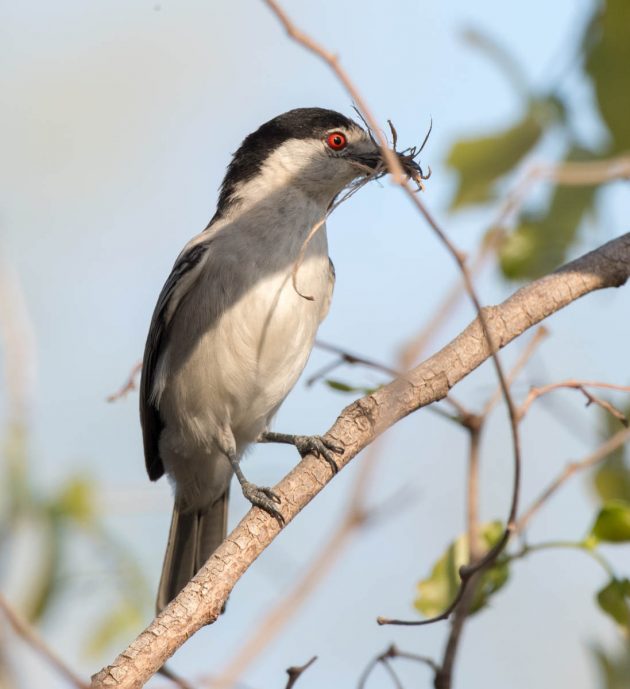
White-fronted Bee-eaters have an interesting social life, as described by ranger Kirst Joscelyne (who I suspect of secretly reading steamy romance novels in her spare time):
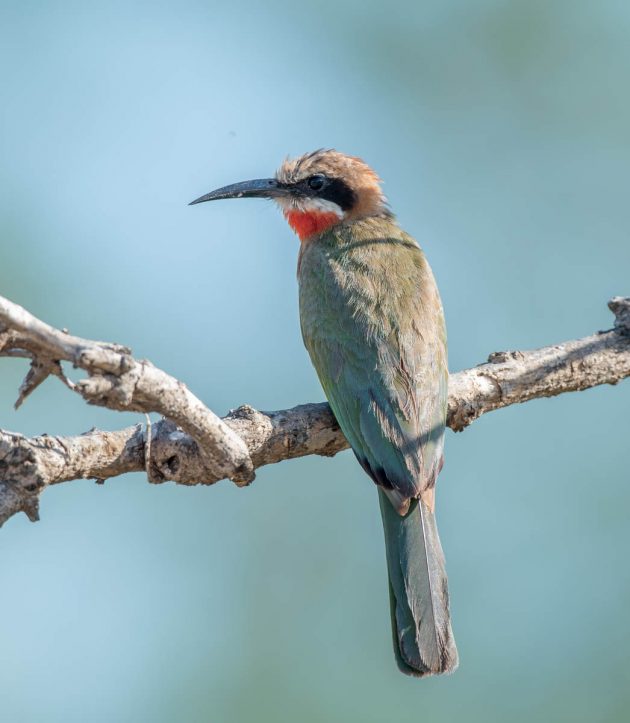
“A colony of them consists of 2-6 families that all have close ties to each other. Each of these ‘families’ consists of a single mating pair and 1-5 ‘helpers’ who assist in raising the young. Together these family groups form a clan and the clans defend this territory from other neighboring clans. The helper birds play an important role in the survival of the chicks as well as assisting in excavating a suitable cavity for the breeding pair. However, these happy families aren’t all what they seem. To add a bit of scandal to the story some of the more experienced brood helpers do sometimes unsuspectingly mate with the breeding female. This affair is further perpetuated by the female sometimes laying these eggs from another male in another white-fronted bee-eaters nest. This sultry affair results in this tight-knit colony being undoubtedly a whole lot closer than they think…”
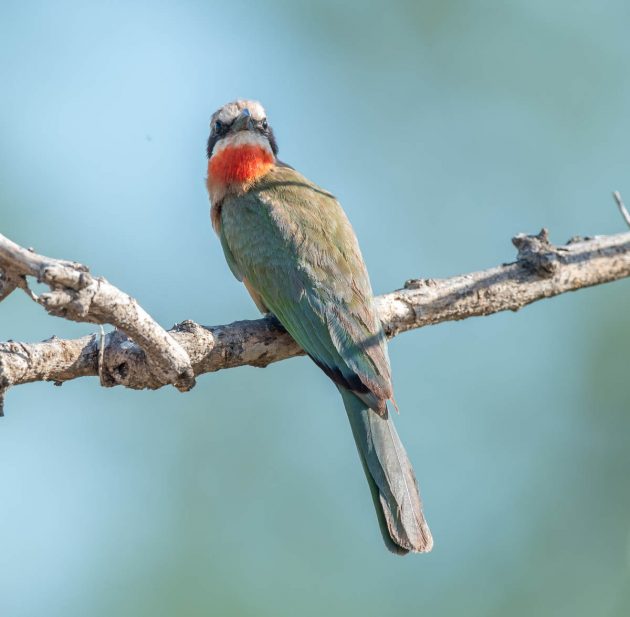
In a study conducted in 1977, Goliath Herons were found to focus on capturing large fish weighing about 500-600 g – something the authors describe as “jackpot strategy”. Goliath Herons captured an average of only 2.3 fish per day, equivalent to about 23-34% of their body weight.
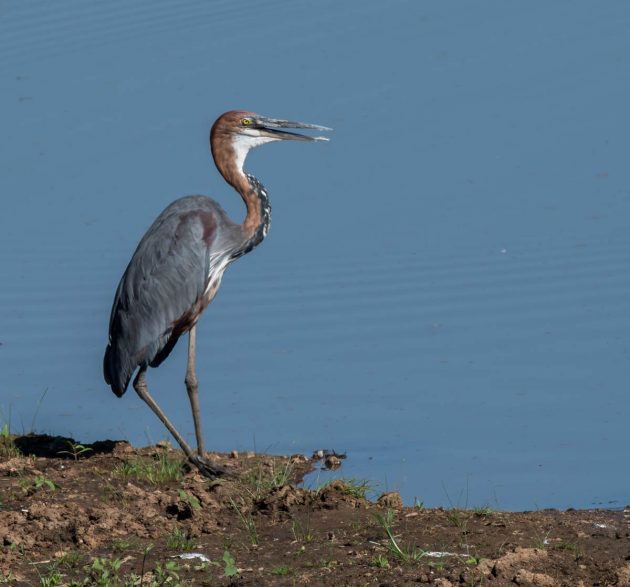
Despite being the biggest herons with an impressive height of more than 1.5 meters, they still lost some of their prey to Fish Eagles.
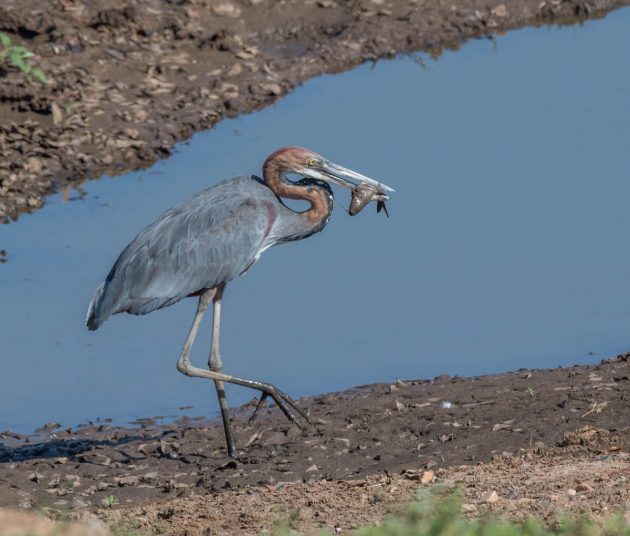
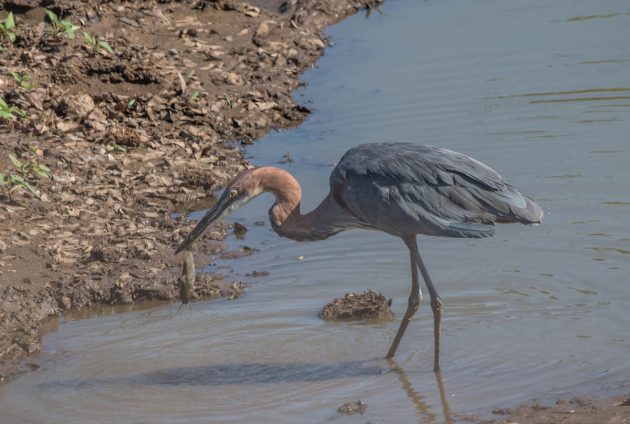
The Greater Blue-eared Starling is one of the many attractive-looking starlings in Africa. The Latin name chalybaeus, “steely”, does not seem wrong but does not fully capture the beauty of this bird either.
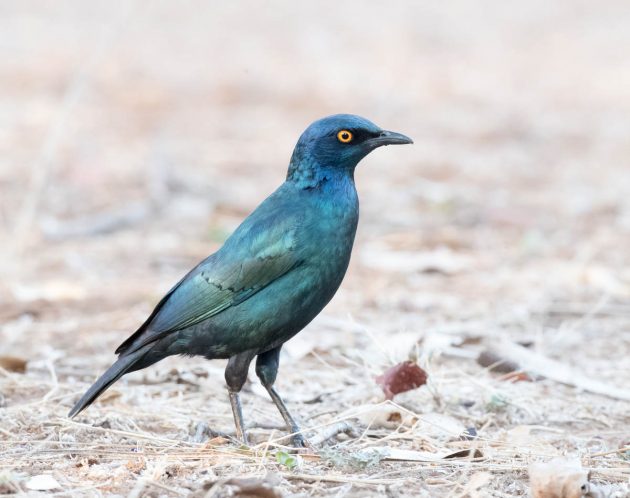
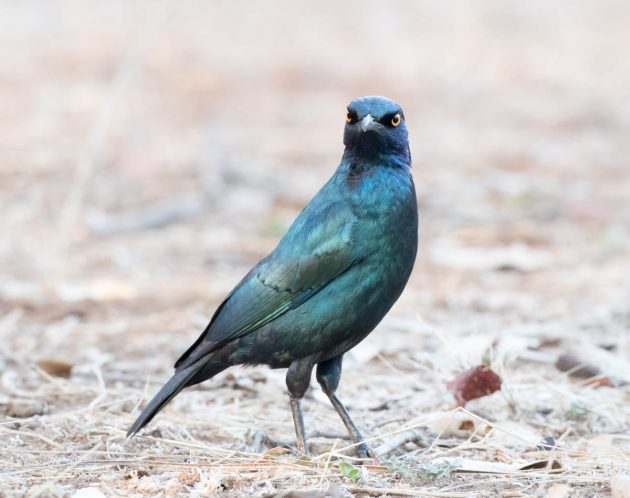
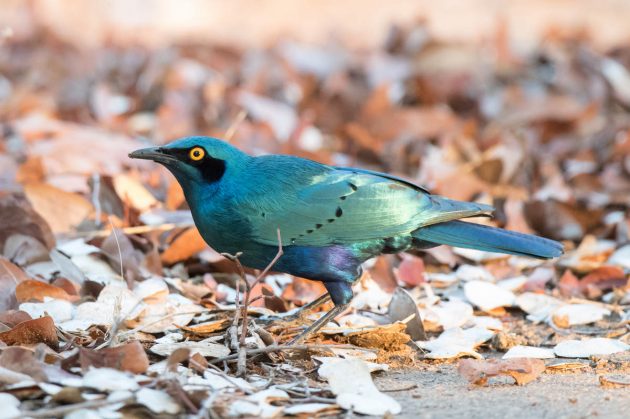
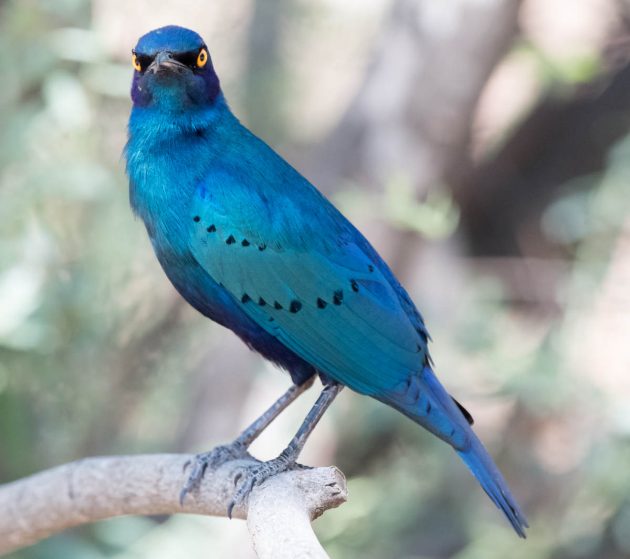
Leaving Bateleur, one passes by the equivalent of used car dealers on the outskirts of US American towns.








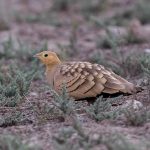





Leave a Comment